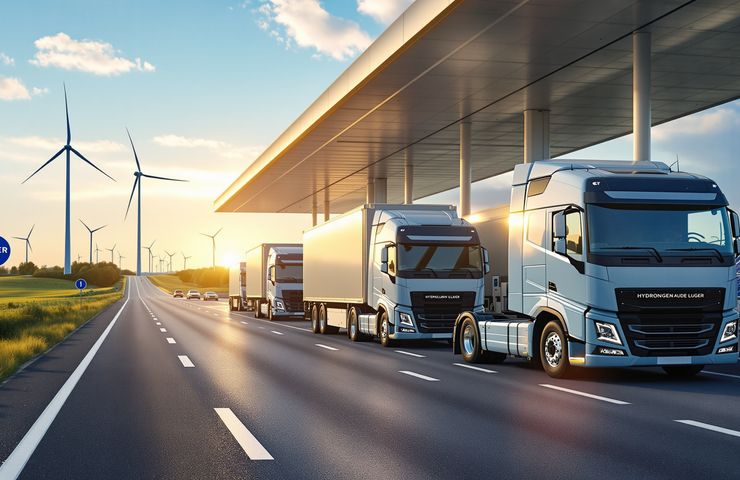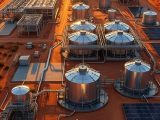
Scaling Europe’s Hydrogen Infrastructure: 70,000 Fuel Cell Trucks by 2030
October 13, 2025Don’t expect Europe’s highways to turn green on a shoestring—unless we beef up the hydrogen infrastructure. On 25 September 2025, ACEA (European Automobile Manufacturers’ Association), the H2Accelerate consortium, backed by the Global Hydrogen Mobility Alliance (GHMA) and tech heavyweights like Bosch, made it crystal clear: Europe needs at least 70,000 hydrogen-powered heavy-duty trucks and between 1,000 and 3,600 high-capacity refuelling stations by 2030. With 448 million people spread across tight EU logistics corridors—from Rotterdam to Budapest—and heavy trucks accounting for a quarter of transport CO₂, this isn’t just green lip service; it’s an economic must if the Green Deal is going to cut real emissions. From Germany’s autobahns to Spain’s fields, the pressure’s on.
Why It Matters
Transport is one of the trickiest sectors to decarbonize, shouldering nearly 30% of EU emissions. Sure, battery-electric trucks are gaining ground, but they suffer from payload penalties and range anxiety on trips over 600 km. As a zero-emission technology, hydrogen fuel cells let you top up in 10–15 minutes and cover 500–800 km on a single fill. Compare that to the average diesel tractor spewing 0.8 kg CO₂ per km (about 64 tonnes a year), and swapping out 70,000 rigs could slash roughly 4.5 Mt CO₂ annually. Yet AFIR is only targeting 45 truck stations by 2025 in key ports—a drop in the bucket compared to what’s needed.
Tech Snapshot
Fuel Cell Trucks: These beasts pack high-pressure tanks that hold hydrogen at 350–700 bar. Modern stacks crank out up to 200 kW continuous power (350 kW peak), and trucks carry 4–8 tanks, each storing 35–50 kg, feeding electric motors that match diesel torque. Over at Bosch’s Nuremberg plant, series production kicked off this year—proof that the tech’s production-ready.
High-Capacity Refuelling Stations: A proper station needs multi-dispensers pumping 200–500 kg per fill, plus about 5 tonnes of buffer storage. You’re looking at capex of €8–12 M for 100 kg/day units and €15–20 M for 1 t/day hubs. They often weave in onsite electrolysis—to ramp up green hydrogen output via PEM or alkaline units—or rely on bulk delivery by tube trailers or rail. Throw in grid upgrades and dedicated HV substations, and both costs and complexity climb fast.
Strategies on the Table
ACEA’s position paper pushes for binding AFIR corridor targets every 150–200 km, NextGenerationEU capex grants for HRS, and purchase incentives for FCEVs. They want State aid through the European Investment Bank’s Hydrogen Fund and IPCEI projects to unlock station financing. H2Accelerate—launched in 2020 by Daimler Truck, Iveco, Shell and TotalEnergies—has demoed 150 trucks and aims to anchor five dense corridors by 2027 through co-investments and EU grants. Meanwhile, GHMA members like BMW, Air Liquide and TotalEnergies rolled out a market activation plan at EU Hydrogen Week, calling for pan-European offtake agreements, standardised dispensers, cross-border roaming and aggregated tendering to spread the risk.
Lessons from Pilots
Take REVIVE in Valencia and HECTOR in Berlin: both have matched diesel fleet uptime (93% availability). But cost per km is still 2–3× higher, driven by hydrogen prices at €8–10/kg versus the €5/kg target. Operators say permitting and safety training need harmonisation—insurance premiums for HRS projects hover at 0.1% of station value, meaning risk assessments are getting sharper but still add red tape. And billing interoperability across borders? It’s still a work in progress.
Reality Check
The hard numbers: ACEA and H2Accelerate insist on 70,000 trucks by 2030. Interact Analysis sees around 45,000 under moderate policy support; with best-case policies you might hit 85,000. That 45k–85k gap is a question mark until governments lock in strong policies. Fleets won’t pull the trigger without cheap, reliable refuelling, and investors won’t build stations without volume certainty.
Right now, Europe’s green hydrogen capacity is under 100 MW of electrolyser capacity. To fuel a 70,000-truck fleet, you’d need another 5–10 GW of electrolysers by 2030. At current capex (€900–1,200/kW), that’s €4.5–12 B just for electrolysers—before you even factor in renewable power auctions, grid upgrades and storage.
Weighing the Bets
Fans argue this is more than cleaner roads—it’s a roadmap for industrial decarbonization and European green energy leadership. Ports like Rotterdam, Antwerp and Piraeus could morph into hydrogen valleys, mixing ammonia production with HRS hubs. Export chances to North America and Asia are on the table too. But if hydrogen prices stay above €8/kg, capex support dries up or battery-electric advances outpace FCEVs, you could end up with stranded assets.
Next Move
The clock’s ticking—Q1 2026 is crunch time. Member states need to lock corridor maps into AFIR notifications, kick off IPCEI electrolyser projects, and roll out national hydrogen strategies that line up with TEN-T. The Commission should steer Connecting Europe Facility grants towards HRS and push Horizon Europe funds into grid-integration demos. Expect heavy lobbying before the 2026 hydrogen strategy review and the 2025 mid-term climate plan. Without these moves, Europe’s hydrogen trucking dream risks stalling at the start line.
Europe’s set the bar high. The real question? Will policymakers and industry bridge the gap between ambition and action, or watch this high-octane vision run out of steam?



 With over 15 years of reporting hydrogen news, we are your premier source for the latest updates and insights in hydrogen and renewable energy.
With over 15 years of reporting hydrogen news, we are your premier source for the latest updates and insights in hydrogen and renewable energy.